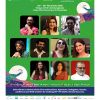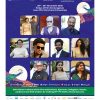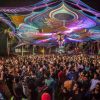Goa is abuzz with excitement as vintage bike and car owners, users, collectors and fans are decking […]
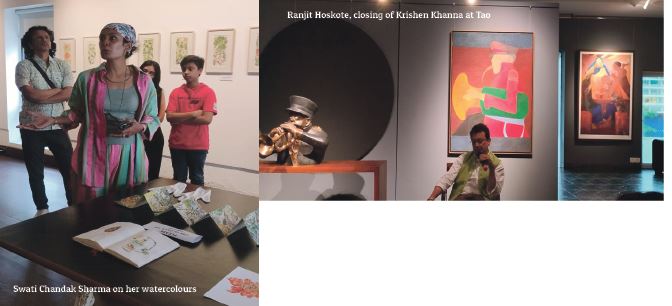
MORE HEART TO YOU PEOPLE!By Joanne Pinto Pereira
JO-GO ART, Sep 07- Sep 13 2024 September 6, 2024I have the annual Zonal hangover! The kind you get when you run the lines backstage prompting a talented heap of “amateur” actors’ intense rehearsals and get zoned out. I’m a teetotaller but this weekend was St Andrew’s 67th Zonal’s grand finale and the neighbourhood is on this Bandra high.
You have people mouthing lines, singing instead of talking, skipping instead of walking, cackling in rickshaws and calling each other stage names!! So while it meant missing art previews and the ABBA tribute at the magnificent Royal Opera House there could be no other way to satiate this beast until September 2025.
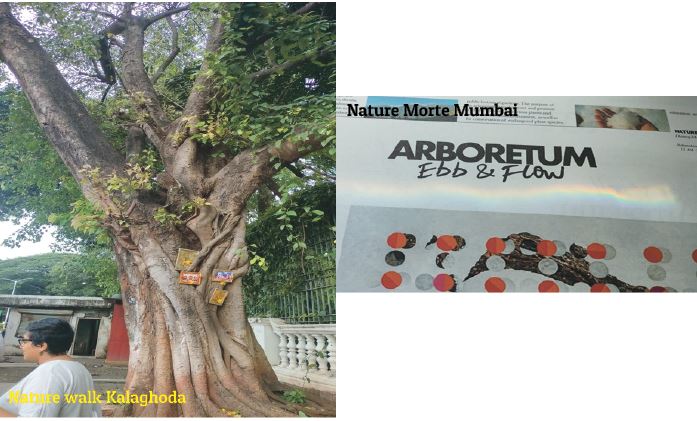
NATURE AS MUSE FOR ART
ARTISAN Radhi is consistent in her efforts to showcase a myriad crafts. This time the gallery curates a walkthrough in sync with their current exhibition “Florescence: A City in Flower.” It is what is close to my heart: watercolours of the seasonal champa, fulmohar or mayflower and several indigenous fauna.
I enlisted for the nature walk at Kala Ghoda — Mumbai Overstory — with Sananda Mukhopadhyaya early Sunday morning. Rise and shine at 6am on Sunday to head for my fix of nature and art. If anything can get me going, it has got to be a tree.
There we were eyes skyward observing the native trees and their characteristics. Avenue trees like the Indian jungli badam tree standing tall with its crown, the massive rain tree with its large canopy (and pink powder puff flowers) sheltering ecosystems. My favourite has to be the copperpod (Radha) with its yellow flowers strewn on the street.
I have long since learnt to identify the trees above from the carpets of flowers below as with the purple jarul (Maharashtra tree) and the rosy trumpet tree or by the fragrance of the saptaparini that permeates all around. The kadamba or forest tree, the baobab (300-year-old Malcolm was axed to make way for road widening in Santa Cruz), the red sandal and the white cotton silk tree in the vicinity take on a different hue. Our oxygen sentinels silently survive the urban onslaught. For now the watercolours make you forget this reality.
We wound up with an interaction with artist Swati Chandak Sharma at Artisans.
On till September 8.
EYE OF THE TIGER
THE magnificent “Eye of the Tiger” at Cosmic Heart Gallery at Marine Lines, Churchgate, is dedicated to tiger conservation. The paintings are like photographs rendered by local talent in collaboration with Princess Diya Kumari Foundation, Sanctuary Nature Foundation, Yes Bank and supported by Bittu Sahgal.
“Like music and art, love of nature is a common language that can transcend political or social boundaries,” said Jimmy Carter, American politician and humanitarian.
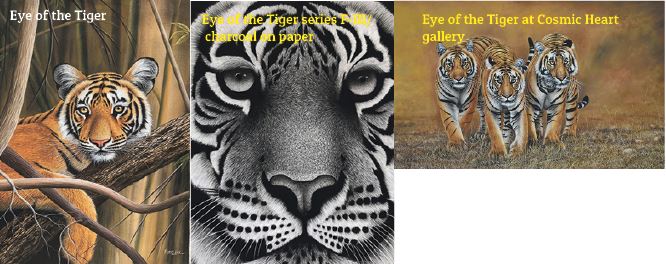
ARBORETUM EBB & FLOW
NATURE Morte’s (Mumbai) latest offering or retelling stories through the trees that stay in us. Thukral and Tagra present Arboretum which relays narratives of mobility, conflict and the idea of home. The works flip photography through their oil paintings. They act as repositories of time. The evolving natural light through the gallery’s windows create a shadow play of their own. It is as if they take charge of the bright canvases adorning the neutral walls.
The images which include chinar or maple leaves in the fall colours of Kashmir, are on my wish list, as are the ginkgo leaves in Japan. The fragrant amore timore (rangoon creeper), pink and white sprays characteristically take over the cloud like light blue canvas. The bunches evoke fragrant nostalgia.
Why tell the story of the digital world through painting? The artists drew respite from Covid by taking succour in nature. Their introspection led them to see trees as living archives of cultural and political winds. The permanence of the medium of painting is used to hold the memory.
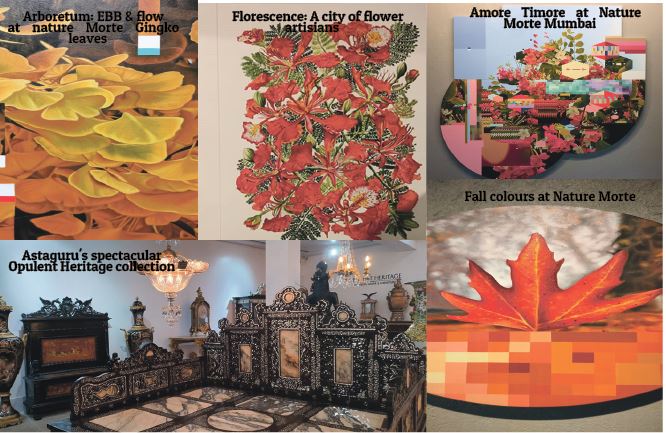
FINISSAGE
BACK to Tao Art Gallery for the Finissage of their comprehensive Krishen Khanna collection. Khanna was self-driven to work in a variety of mediums. Ranjit Hoskote, poet and art curator who is synonymous with his immense knowledge of the art world, tied the threads that connect the centennial’s work to reveal the parallel to his life experiences. You can trace the imagery from the initial charcoal sketches, his Partition narrative, his signature “Bandwallas” and the Christian iconography of “The Pieta” to overt recurrent symbolism. You read bread as a metaphor across social strata as the common denominator and likewise underline the uniform donned by the bandwallas to play their cheery tunes.
Hoskote touched upon how his career choice of chronicling the gamut of Indian masters took a turn after a conversation with Khanna. A documentary by Harkat Studios relayed the Master’s journey from a child of 6 years striving to achieve perfection in his rendition of “The Last Supper” — a rendition in the form of a tapestry is the central piece of the exhibition. Khanna, the last of the Progressives, returned from the West and eventually gave up his bank job to pursue his passion of creating visual art.
I stepped behind the scenes to soak in the canvases put together by Farah Siddiqui Khan’s emerging women artists. The exhibition “What She Means” has ended but has left us to ponder over the significance of women’s voices in art and culture. The canvases wrapped and stacked make you value the skill and effort that goes into the final presentation.










